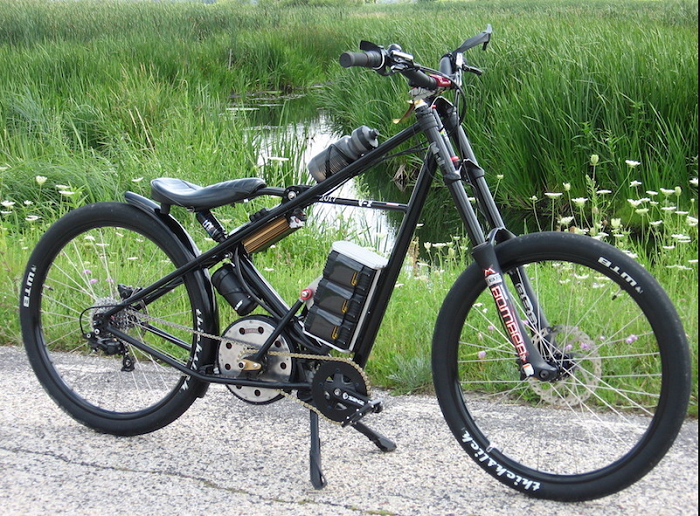Total noob to eBikes here, learning before spending, don't want "cheapest" but not made of money either.
I do know a bit about batteries, at least certain chemistries.
My goal is 1000+ up to 1500W, I'm a big guy and use case is pure utility, commuting and cargo, maybe tandem, occasionally (very) rough-surface usage and often big hills.
I do not want to stress the motor, reliability and longevity are key,
speed is **not** important but torque is; I assume gearing is the solution there
From a recent post:
> motors don't care about voltage - they only care about power dissipation.
I assume the first bit needs a "within reason" qualification, applying 600+V to a motor targeted for a 36V range is likely not a good idea?
Sometimes I see members talking about upping the voltage to get higher performance.
My general battery pack standard (for other purposes) is 48V nominal, but using 12V modules, so I can go to 60/72/84, (easiest) 96V or even higher as needed.
So, my 101- level questions
A. What voltage should I plan for, or should I let that be dictated by the motor choice?
I realize there are controllers in the mix, but to keep this thread streamlined, let's leave that for another.
B. Reco's please for motors, both mid and hub. Are rear hub motors different from front ones?
I will want very solid drag braking for safety, precious heavy loads going down long descents. Willing to dedicate a motor just for regen to help with that goal, at minimum the choice of rear hub motor should not compromise it.
C. I like the idea of modularity, and understand some jurisdictions impose legal limits (on voltage? power?)
Ideally I could modify the bike by removing adding / replacing motors, if I live in NYC or SF for a while, then reconfigure for off-grid boondocking on BLM land in Arizona. I do not have space for multiple bikes.
Is multiple motors a good way to accomplish this? Swapping out a front wheel to remove the more powerful one seems pretty straightforward.
Thanks in advance
I do know a bit about batteries, at least certain chemistries.
My goal is 1000+ up to 1500W, I'm a big guy and use case is pure utility, commuting and cargo, maybe tandem, occasionally (very) rough-surface usage and often big hills.
I do not want to stress the motor, reliability and longevity are key,
speed is **not** important but torque is; I assume gearing is the solution there
From a recent post:
> motors don't care about voltage - they only care about power dissipation.
I assume the first bit needs a "within reason" qualification, applying 600+V to a motor targeted for a 36V range is likely not a good idea?
Sometimes I see members talking about upping the voltage to get higher performance.
My general battery pack standard (for other purposes) is 48V nominal, but using 12V modules, so I can go to 60/72/84, (easiest) 96V or even higher as needed.
So, my 101- level questions
A. What voltage should I plan for, or should I let that be dictated by the motor choice?
I realize there are controllers in the mix, but to keep this thread streamlined, let's leave that for another.
B. Reco's please for motors, both mid and hub. Are rear hub motors different from front ones?
I will want very solid drag braking for safety, precious heavy loads going down long descents. Willing to dedicate a motor just for regen to help with that goal, at minimum the choice of rear hub motor should not compromise it.
C. I like the idea of modularity, and understand some jurisdictions impose legal limits (on voltage? power?)
Ideally I could modify the bike by removing adding / replacing motors, if I live in NYC or SF for a while, then reconfigure for off-grid boondocking on BLM land in Arizona. I do not have space for multiple bikes.
Is multiple motors a good way to accomplish this? Swapping out a front wheel to remove the more powerful one seems pretty straightforward.
Thanks in advance


